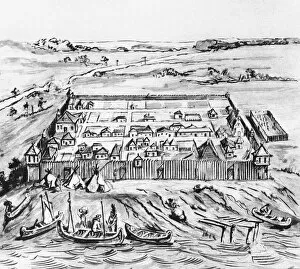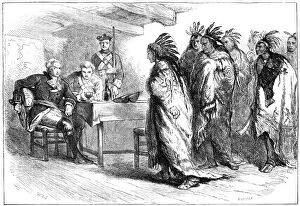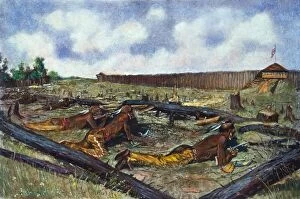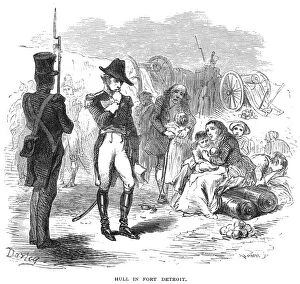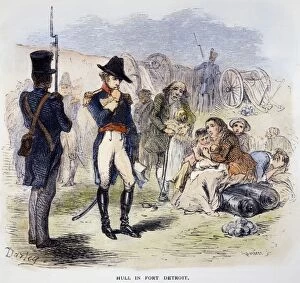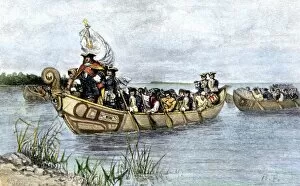Fort Detroit Collection
Fort Detroit: A Historical Panorama - From its founding in 1749 to the pivotal events of the 18th and 19th centuries
For sale as Licensed Images
Choose your image, Select your licence and Download the media
Fort Detroit: A Historical Panorama - From its founding in 1749 to the pivotal events of the 18th and 19th centuries. Witness the visit of Chief Pontiac and the Indians to Major Gladwin in 1763, depicted in Whymper's painting. Explore the map from 1749, based on a drawing by Joseph Gaspard Chaussegros. Relive the siege during the American Revolution, as chronicled in an anonymous watercolor from 1794. Navigate the Detroit River between Lake St. Clair and Lake Erie, as shown in this 1812 map. Experience the fateful decision of U.S. General William Hull to surrender Fort Detroit to the British in 1812, as captured in this wood engraving by Felix O.C. Darley. Meet the legendary Native American Ottawa chief, Pontiac, whose name is synonymous with the siege, in these engravings from the late 19th century. Discover the rich history through these captivating images.

